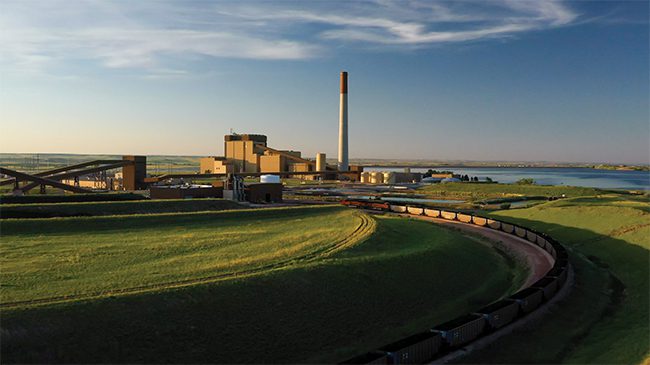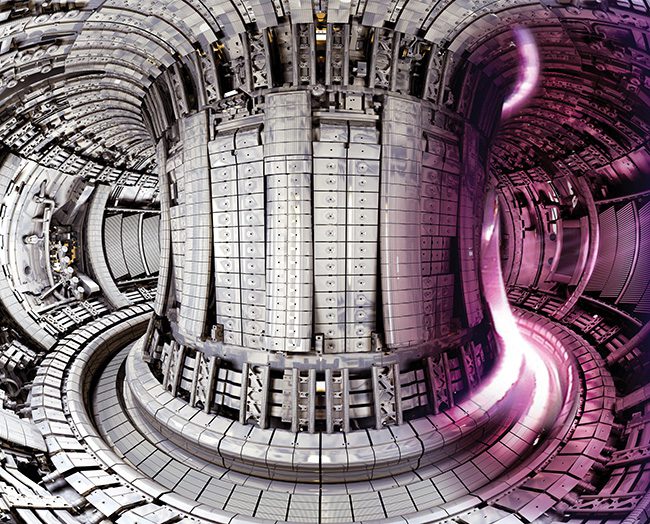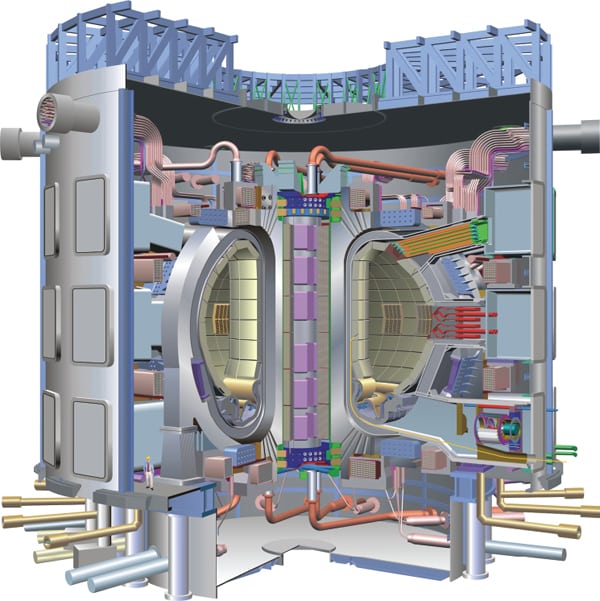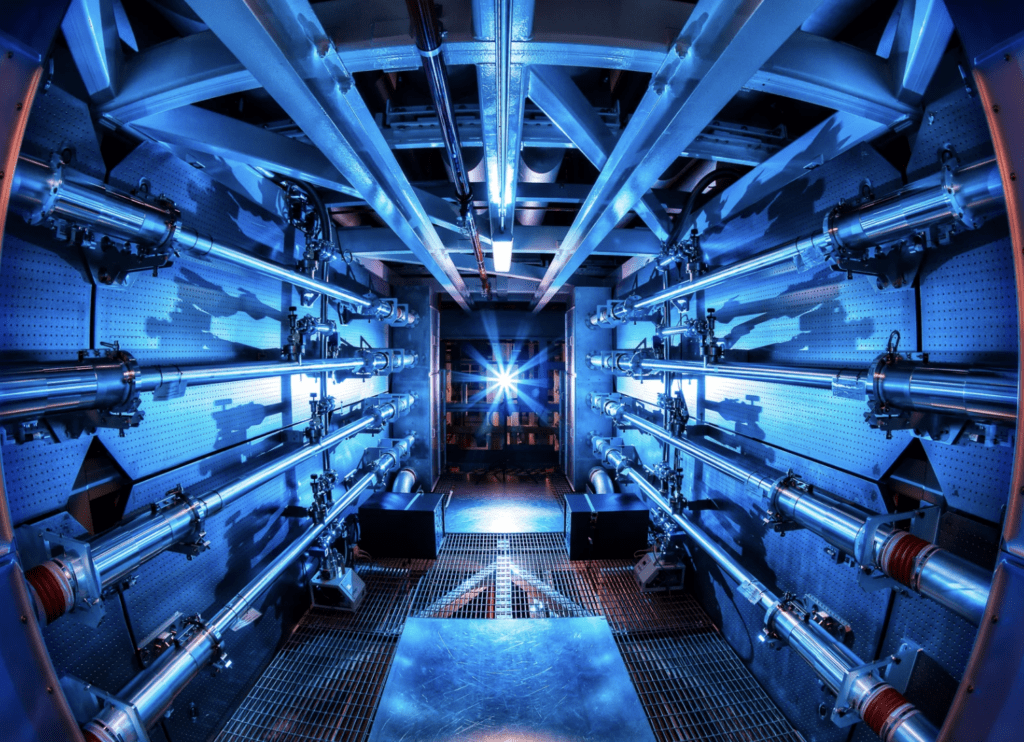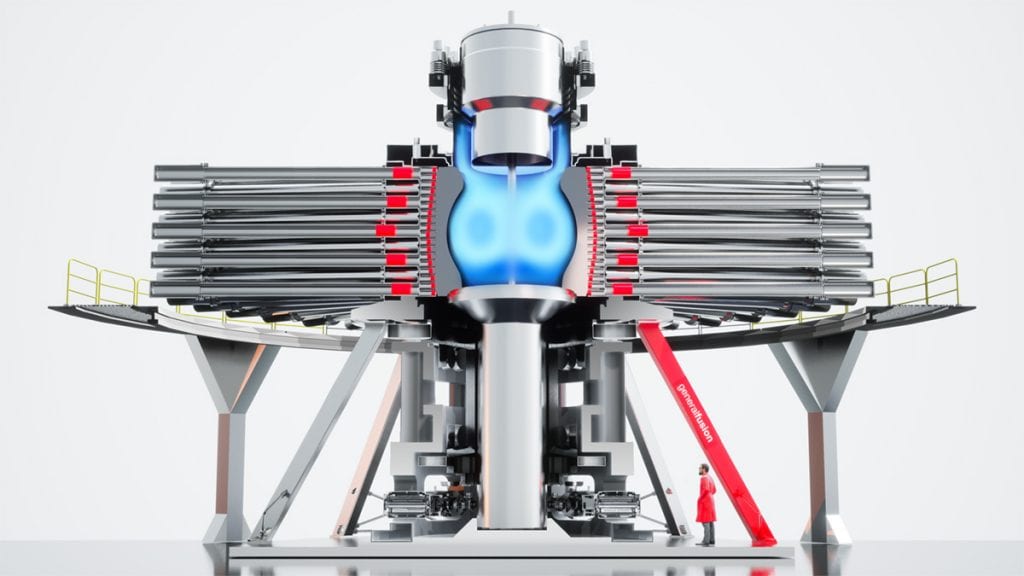Scientists and engineers working at the Joint European Torus (JET) have set a new record for sustained fusion energy. The team on Feb. 9 reported producing 59 megajoules of fusion energy, more than doubling the previous record of 21.7 megajoules set in 1997 at JET. The achievement was touted as “a major step forward on fusion’s roadmap as a safe, efficient and low carbon energy.”
JET is the largest existing fusion device in the world. JET was built and has been operated in Culham, UK, as a Joint Undertaking of the European Community since 1977 under the Euratom Research and Training Programme. European fusion laboratories have collaborated at the JET facility through the consortium called EUROfusion—the European Consortium for Development of Fusion Energy—in line with a long-term strategy to harness fusion energy.
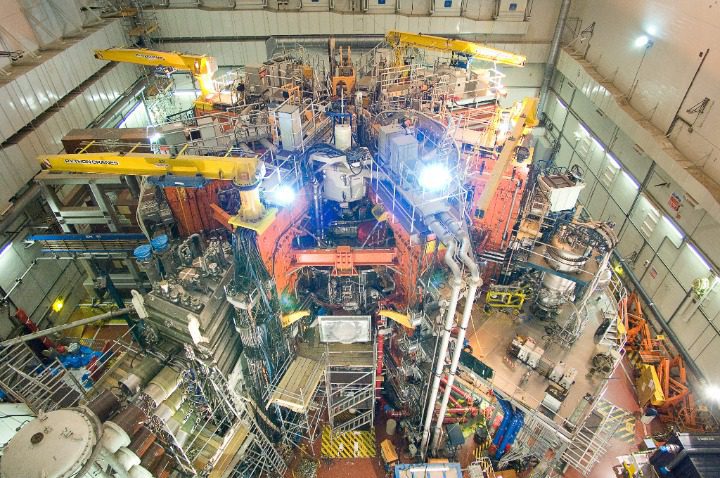
Collaboration Continues
The EUROfusion consortium includes a team of about 4,800 scientists, engineers, experts, students, and staff from across Europe, including Switzerland, Ukraine, and the UK. The group completed the fusion experimental campaign at JET with the same fuel mixture to be used by future commercial fusion energy power plants.
JET operated under a bilateral contract between the European Commission (EC) and the Culham Centre for Fusion Energy (CCFE)—the UK’s national fusion research laboratory—for many years. However, the responsibility for the JET facility was fully transferred to the UK after the contract expired on Oct. 31, 2021. The UK is now the owner and operator of JET.
“These milestone results are testament to the UK’s role as a global leader in fusion energy research. They are evidence that the ground-breaking research and innovation being done here in the UK, and via collaboration with our partners across Europe, is making fusion power a reality,” George Freeman MP, Minister for Science, Research and Innovation, said in a statement.
Ian Chapman, CEO of the UK Atomic Energy Authority (UKAEA), said: “These landmark results have taken us a huge step closer to conquering one of the biggest scientific and engineering challenges of them all. It is reward for over 20 years of research and experiments with our partners from across Europe.”
EUROfusion researchers announced a record-breaking 59 megajoules of sustained fusion energy at the JET tokamak today, demonstrating the potential of #fusionenergy. https://t.co/k1Nwokh6k5#FusionInEurope #road2fusion pic.twitter.com/r9iG54QKrn
— EUROfusion (@FusionInCloseUp) February 9, 2022
‘Confidence Builder’ for ITER Project
The CCFE said the scientific data collected from the recent experiment is a major boost for ITER, the larger and more advanced version of JET being constructed in southern France. ITER is a fusion research mega-project supported by seven members—China, the European Union, India, Japan, South Korea, Russia, and the U.S.—to further demonstrate the scientific and technological feasibility of fusion energy. Thousands of engineers and scientists have contributed to the design of ITER since the idea for an international joint experiment in fusion was first launched in 1985.
In reference to the record-setting performance at JET, Dr. Bernard Bigot, director general of ITER, said: “A sustained pulse of deuterium-tritium fusion at this power level—nearly industrial scale—delivers a resounding confirmation to all of those involved in the global fusion quest. For the ITER Project, the JET results are a strong confidence builder that we are on the right track as we move forward toward demonstrating full fusion power.”
Workers at the ITER project are currently in the process of commissioning the facility’s heat rejection system. The system is the third and final loop at ITER, ultimately dissipating the full heat load from the plant during operation. Commissioning officially started on the system in August 2021. However, Thomas Pralus, the cooling water engineer in charge of commissioning the heat rejection system, said in an ITER newsline post that “cold commissioning,” which included testing about 1,000 input-output signals from temperature, pressure, flow, and vibration sensors, had begun a bit earlier.
Pralus reported workers were conducting flushing operations on the system in February, which was expected to be completed in early 2022. The commissioning team’s goal is to be ready for the first client, the cryoplant, which will start commissioning in 2022 and will require a cooling water system by mid-2022. Commissioning is also expected to begin on another secondary loop in 2022—the chilled water system loop—which will be used for the installation’s heating, ventilation, and air conditioning needs. If all goes according to plan, the heat rejection system and four secondary cooling water systems will be fully tested by the end of 2022.
Coming Soon: Fusion Power Plants
In the UK, steps are underway to identify the site for the country’s first fusion power plant. Community engagement activities were conducted through a series of virtual forum events held in five selected regions from Jan. 26 to Feb. 10. The program called STEP (Spherical Tokamak for Energy Production) is being led by the UKAEA and seeks to “pave the way for the development of commercial power plants, capable of supplying a limitless supply of safe, sustainable, green energy.” The five short-listed sites are: Ardeer, North Ayrshire; Moorside, Cumbria; Goole, East Yorkshire; West Burton, Nottinghamshire; and Severn Edge, Gloucestershire.
The CCFE said STEP will showcase how a future fusion power station will be operated and maintained. Through the outreach process, UKAEA engineers and scientists involved in the first-of-its-kind project engaged with residents and stakeholders from the five communities to “explain the benefits of safe, sustainable fusion energy, and how the proposed prototype power plant will create thousands of highly skilled jobs and attract other high-tech industries to its host region.”
“While it’s still early days, we anticipate that the host region will become a global hub for a wide range of technological and scientific expertise, leading to massive economic opportunities,” Tristram Denton, head of Commercial and Programme Development for STEP, said in a statement.
The STEP site will be selected by the Secretary of State at the Department of Business, Energy and Industrial Strategy. The final decision on the successful site is expected around the end of 2022.
—Aaron Larson is POWER’s executive editor (@AaronL_Power, @POWERmagazine).





